For 2023, DataReportal worked with We Are Social, Meltwater, and data partners like Semrush and Similarweb to create the Digital 2024: Global Overview Report.
The 561-page report analyzes almost everything about how people around the globe use the internet. It contains key statistics that should give marketers insight into effectively using their marketing and advertising budgets in 2024.
Here are the top takeaways for SEO, PPC, and social media marketing with global digital insights.
1. Digital Advertising Spend Increases Almost 11% YoY
Digital ad spending, comprising 70% of the $1.03T total ad spending in 2023, shows a year-on-year increase of 10.6%.
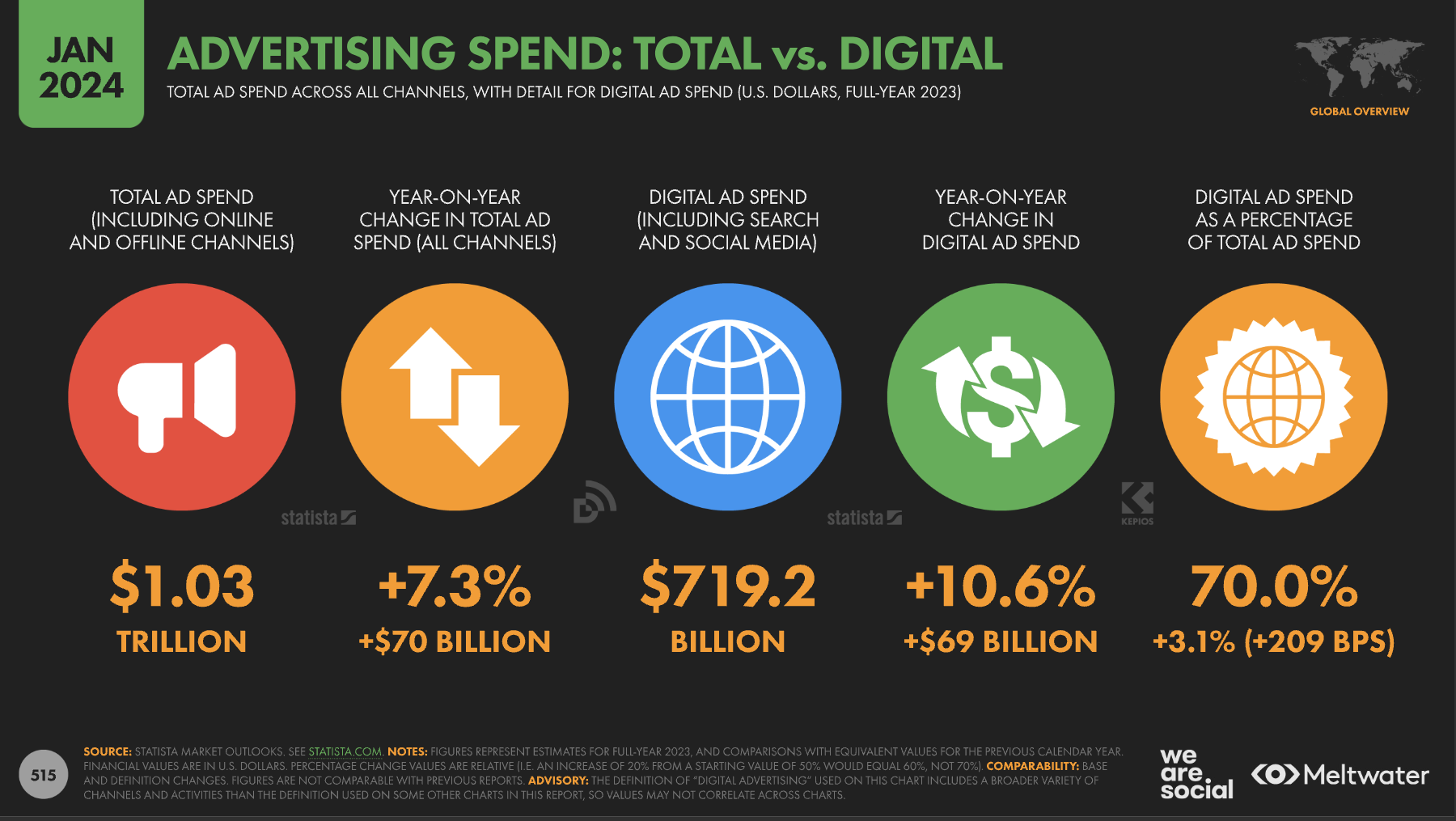
With generative AI changing the landscape of SERPs and ad opportunities, brands should adapt and explore new ways to reach consumers. It appears brands are doing that, with the largest increase in spending YoY going to online influencers and digital audio.
However, online search and video ad spending contribute to over half of the total digital advertising spend.
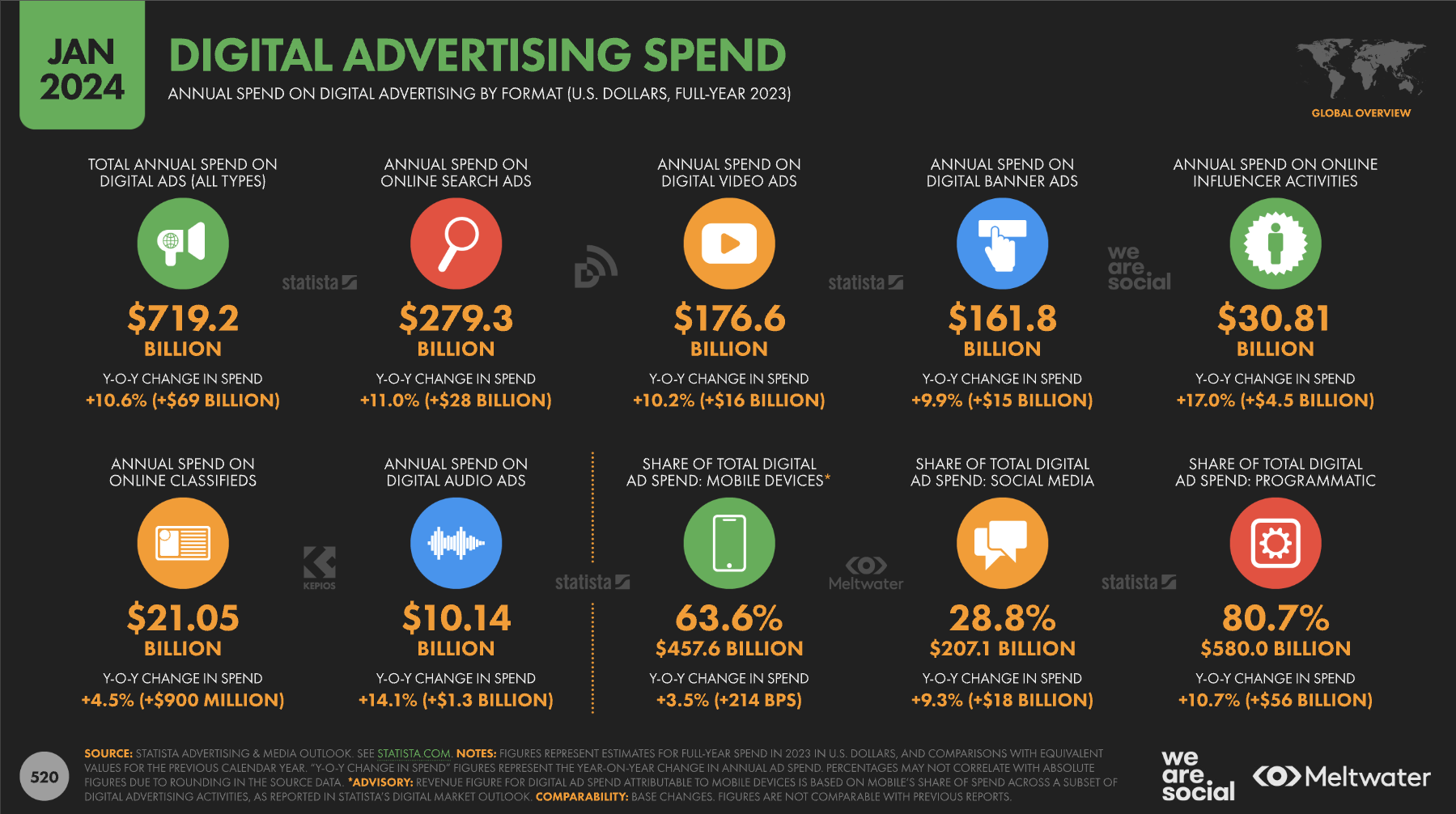
This positions Google Ads, with Gemini-powered tools, essential for brands to reach consumers in Google SERPs, on YouTube, and throughout the Display Network.
2. Search Advertising Spend Increases 11% – Along With CPC
Search advertising – 38.8% of the total digital advertising spend – grew 11% YoY.
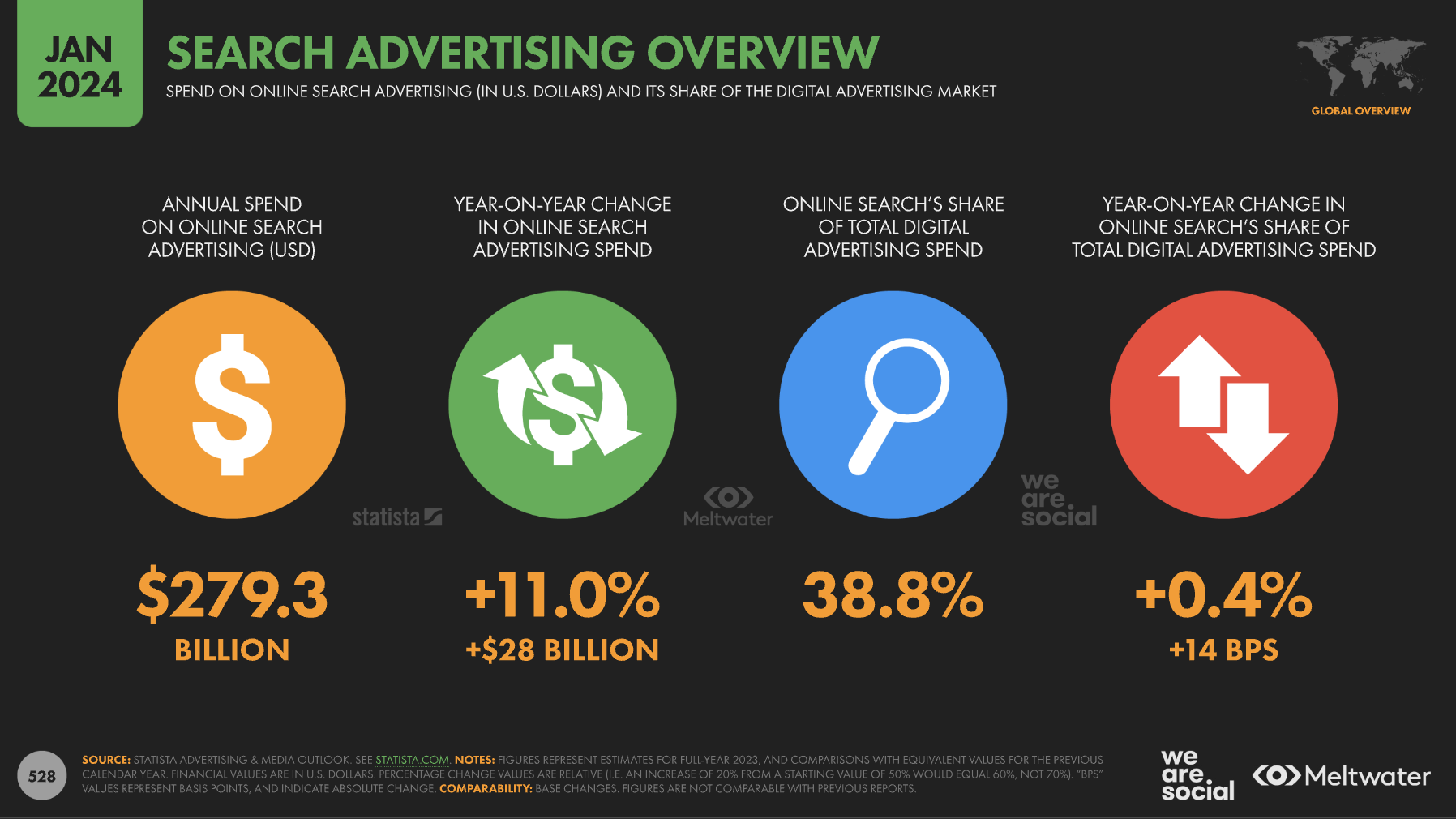
Search advertising impressions have increased, while click-through rates have stayed steady at almost 2%.
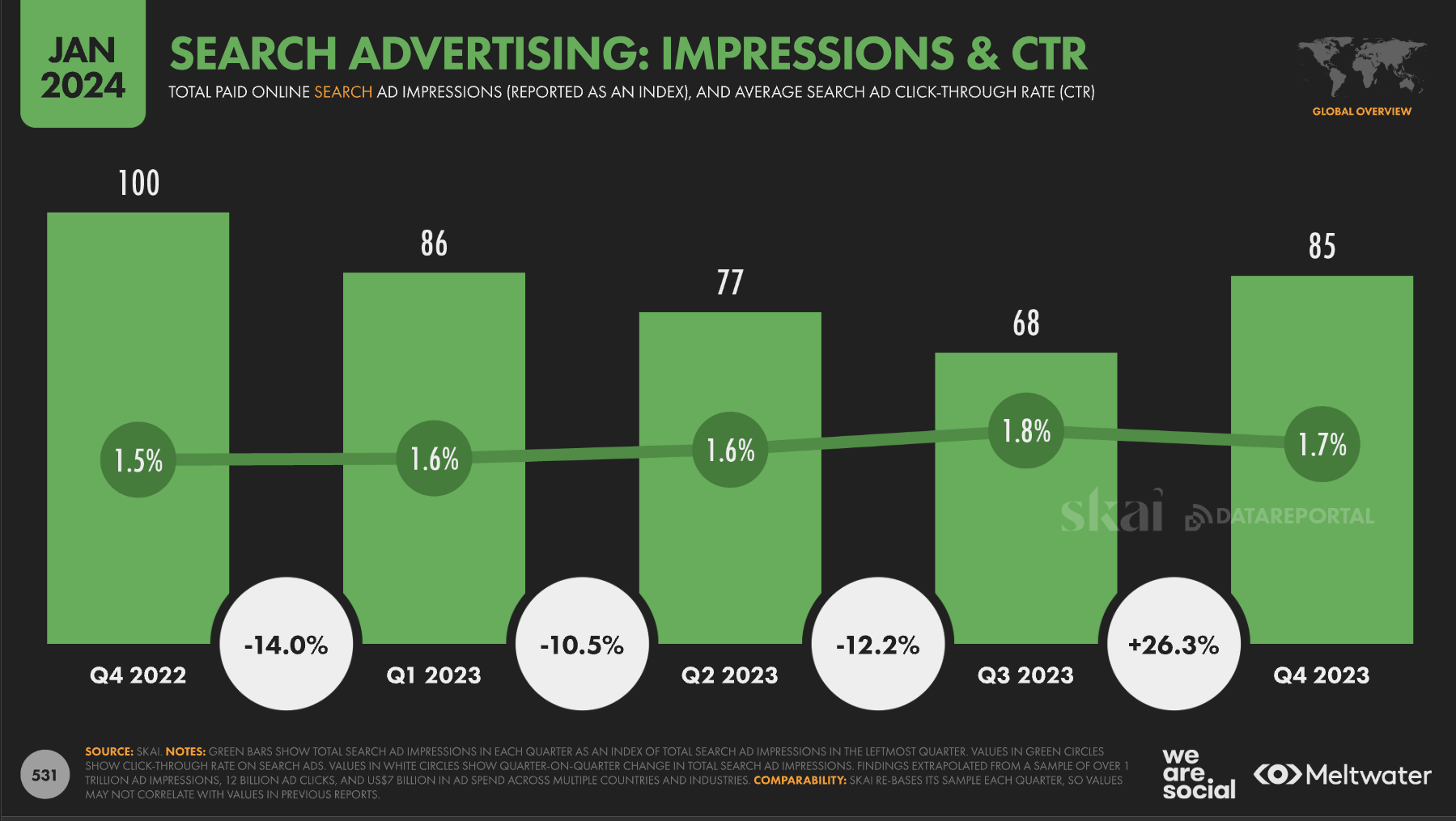
Unfortunately, CPC search ad costs continue to climb, with a slight boost of 2.3% YoY.
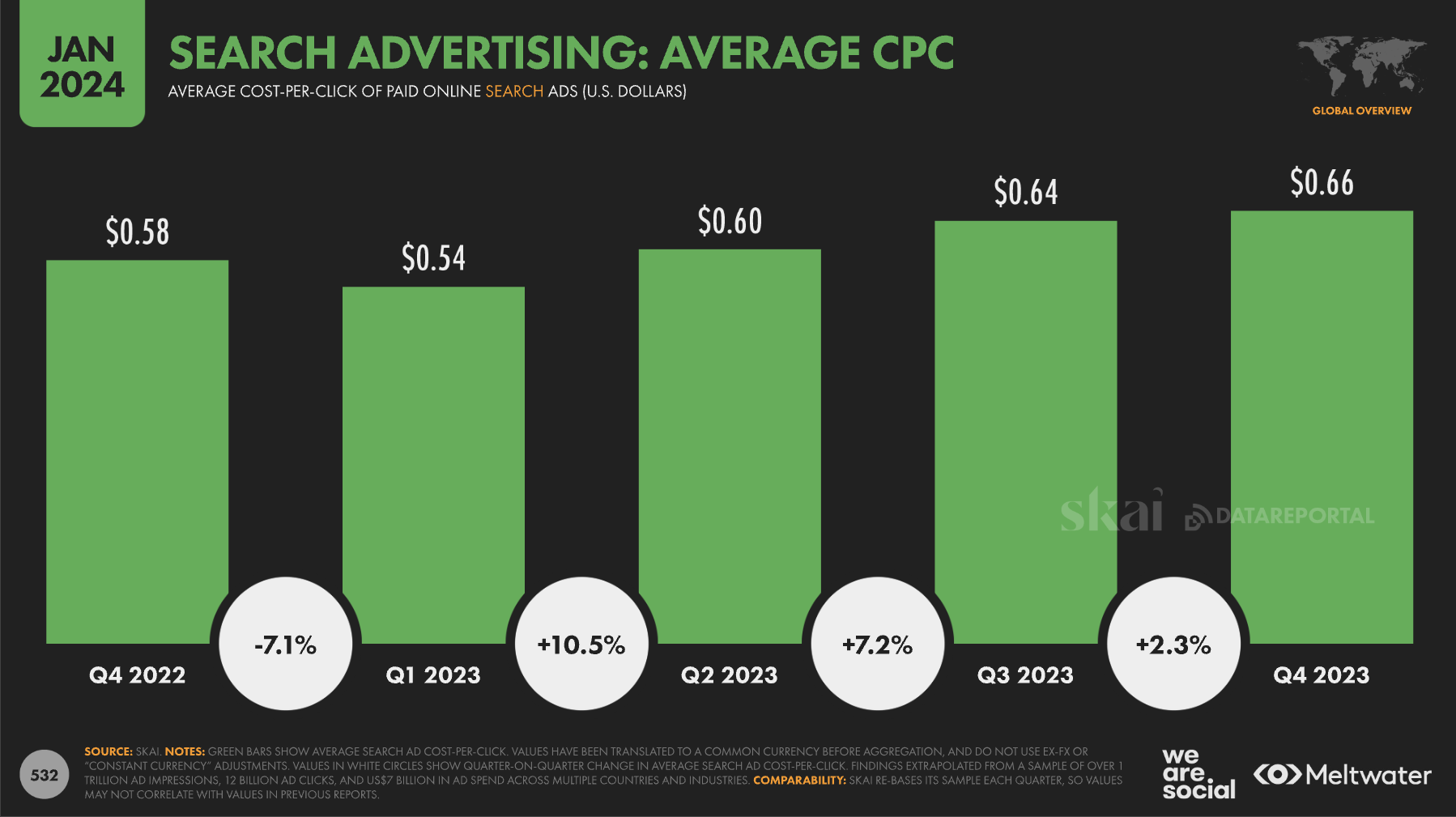
3. Half Of Consumers Choose Search For Brand Research
Is SEO dead? No – the process will always adapt to current trends, algorithm changes, and new technology.
Marketers should continue investing in search since consumers choose search engines for brand research, leading to purchasing decisions.
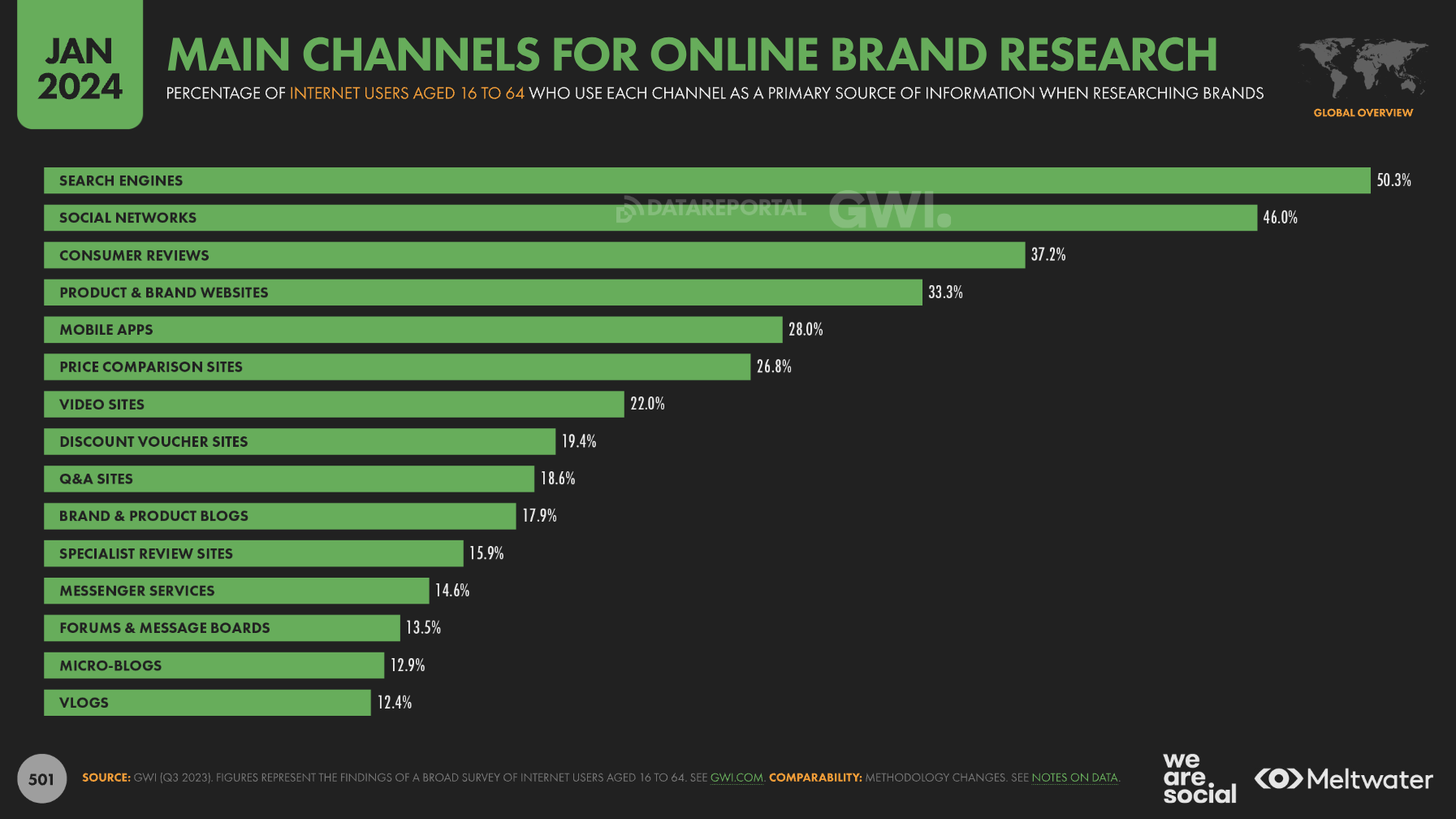
Search also leads as how almost one-third of consumers discover new brands, products, and services.
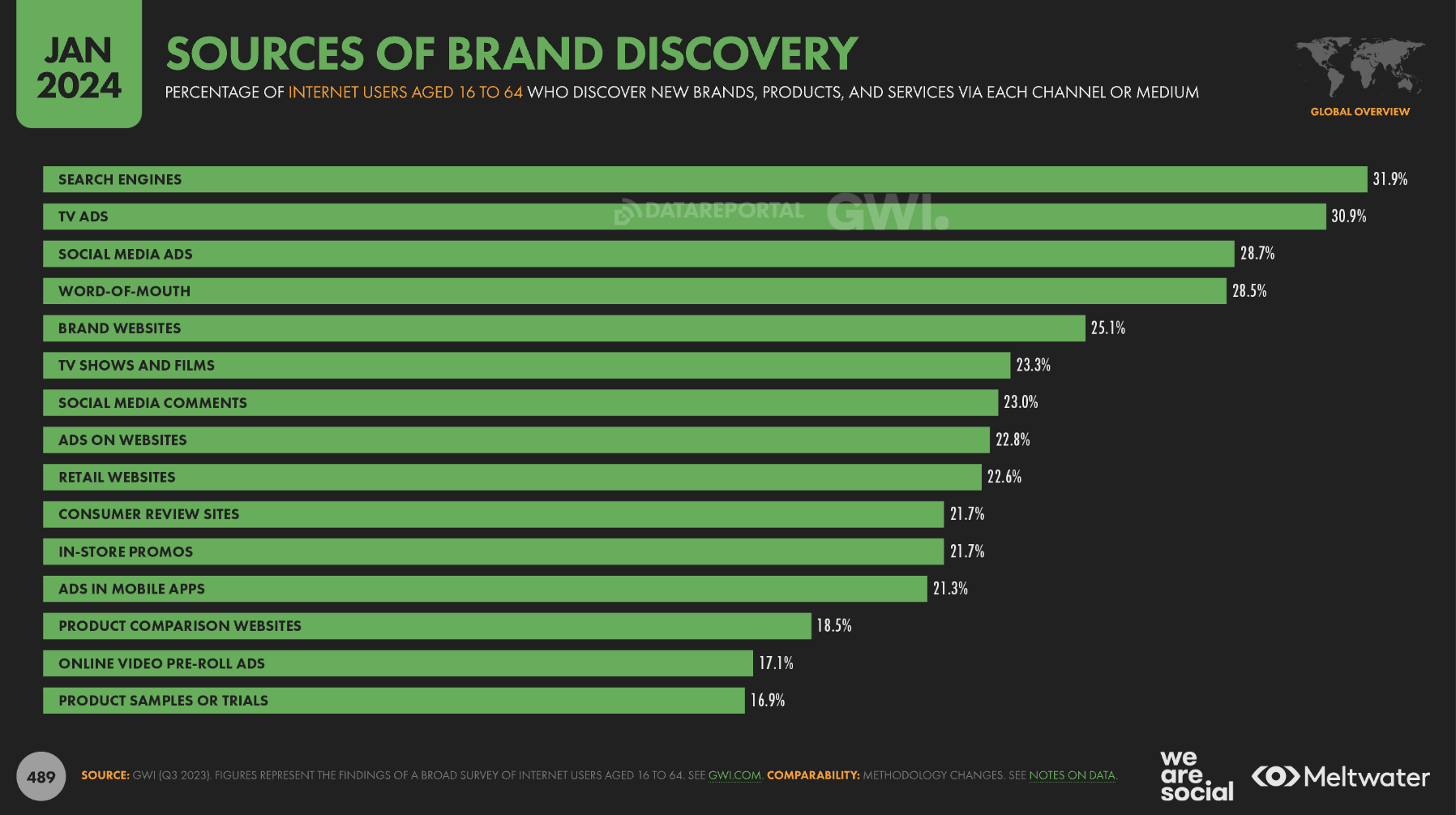
It’s worth noting that while Google dominates the search market share, Bing is on the rise, with an increase of 11.2% YoY.
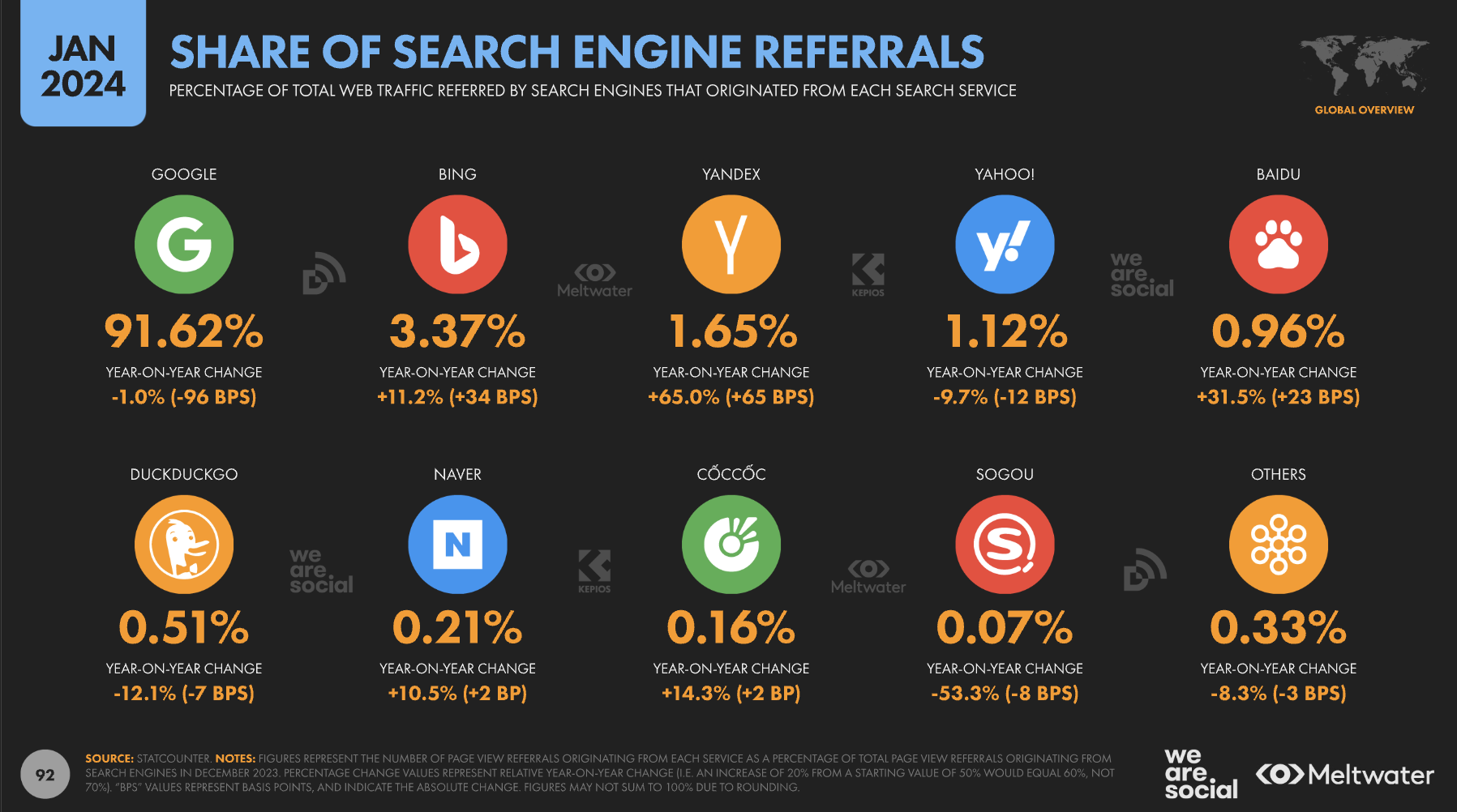
It could be thanks to Bing’s advances in integrating generative AI chat with search and Bing as the browser feature for ChatGPT users.
4. The Importance Of Social Media Content Increases
Marketers should note that following search engines, social media comes in second for channels used for brand research.
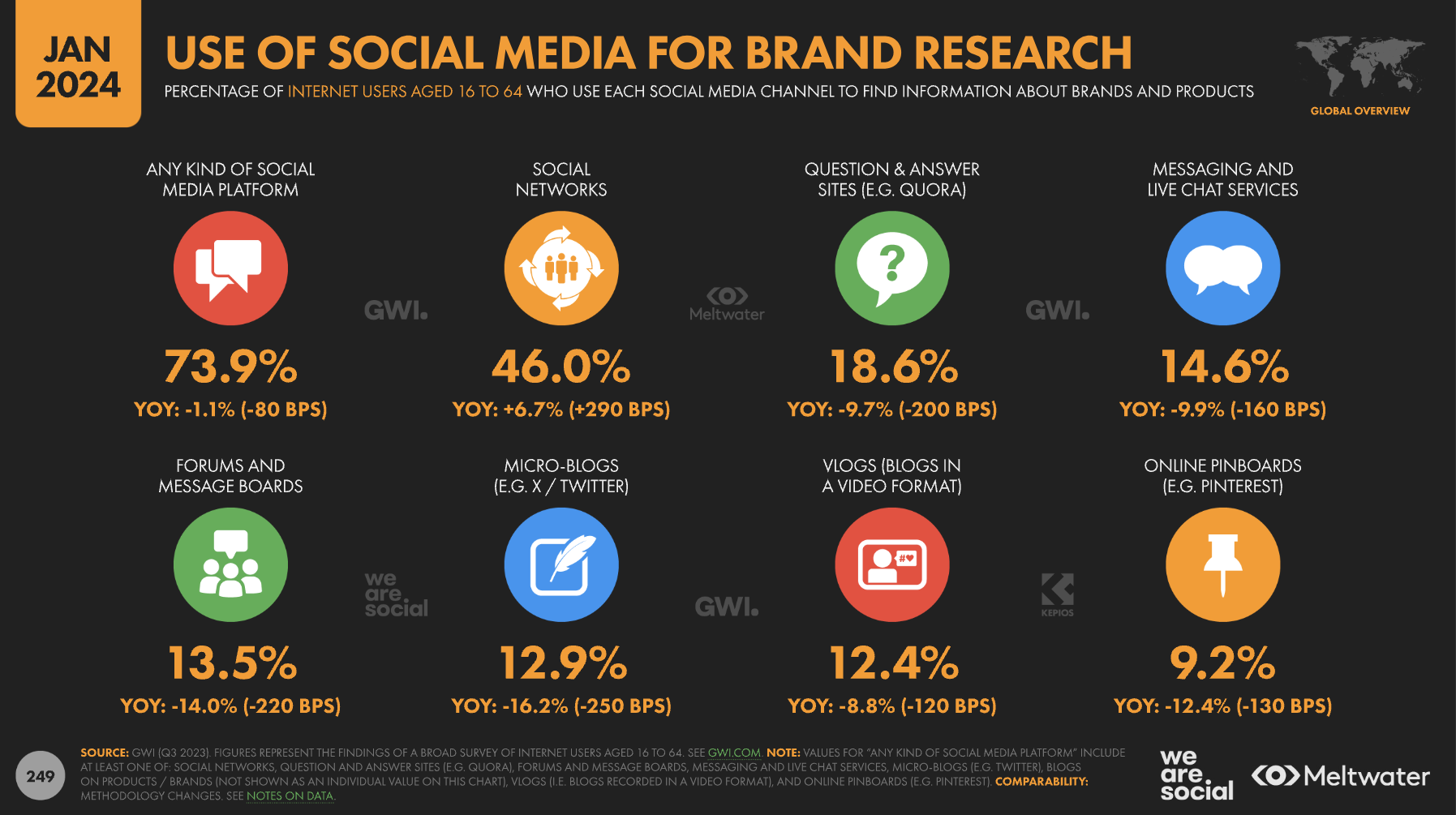
Combined with the fact that posts from social networks are increasing in Google SERPs, social media marketing is another crucial area for brand advertisers to invest in.
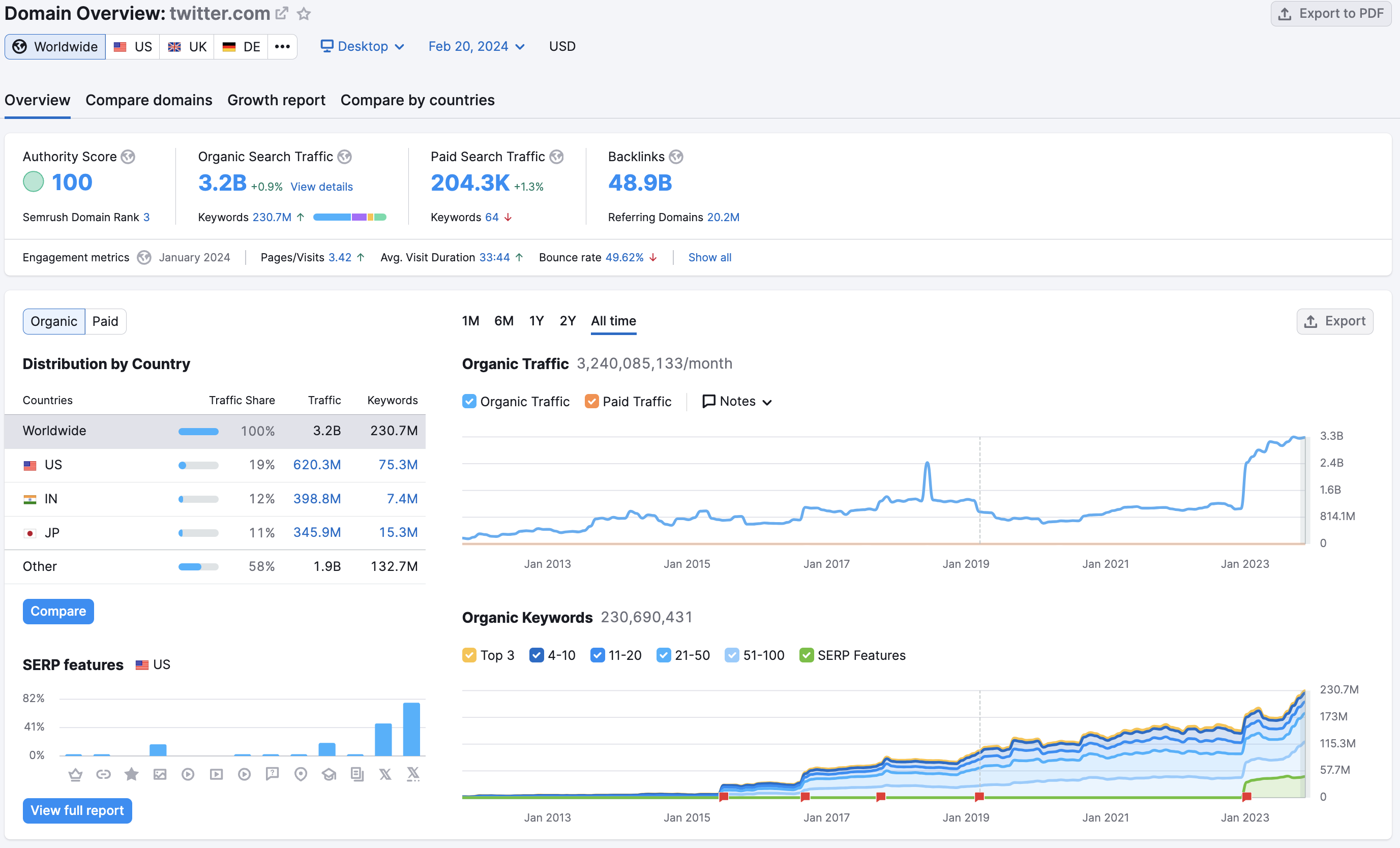 Screenshot from Semrush, February 2024
Screenshot from Semrush, February 2024 Screenshot from Semrush, February 2024
Screenshot from Semrush, February 2024In addition to the increased search visibility, consumers interact with brands most through social media by watching videos, following, using a social share button on the brand’s website, clicking on promoted content, and asking brands questions on social channels.
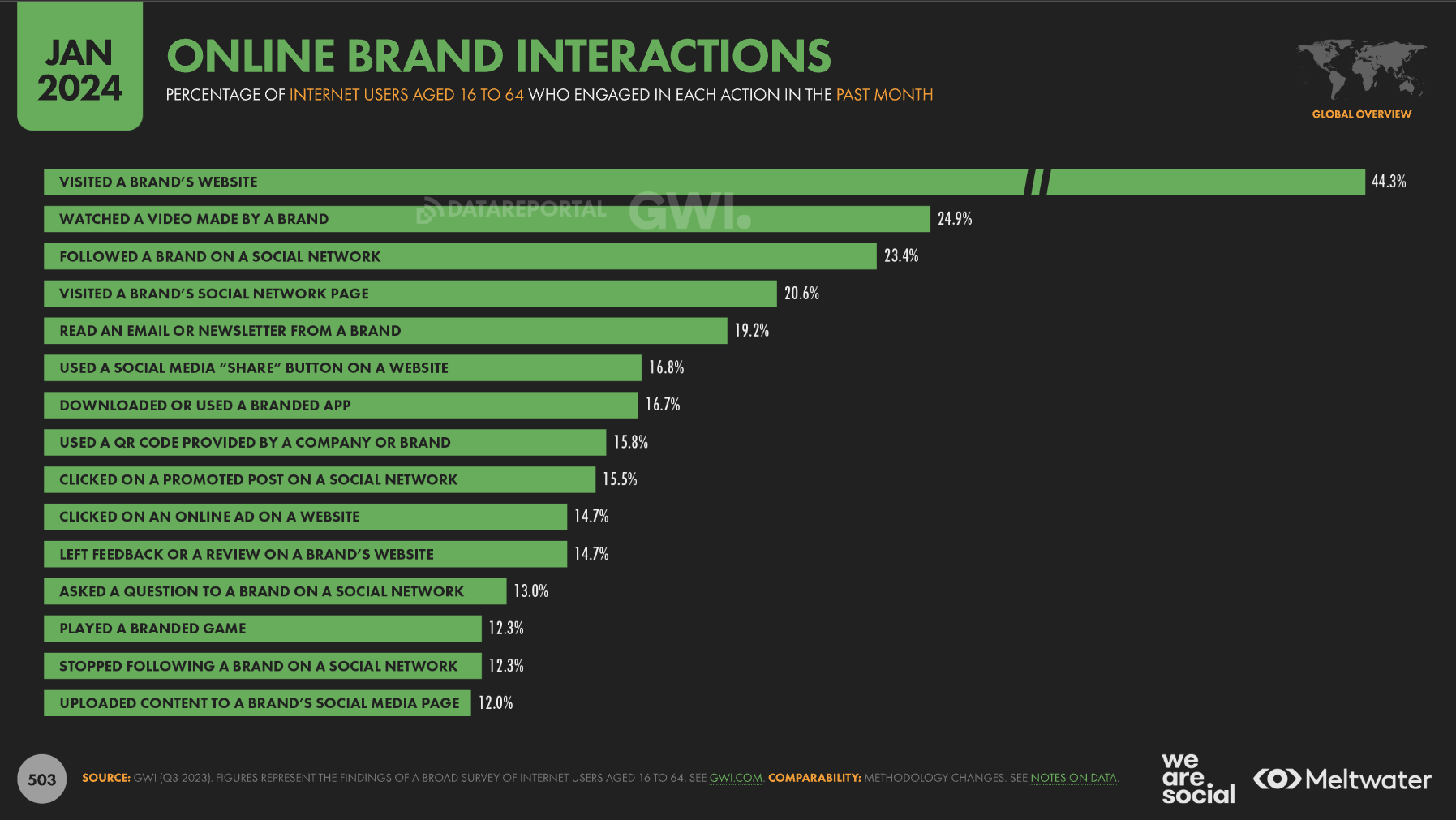
5. Social Hashtags That Drive Engagement
Google hasn’t just seemingly increased the number of social media posts in search results. SERPs also include engagement metrics like views, comments, and likes.
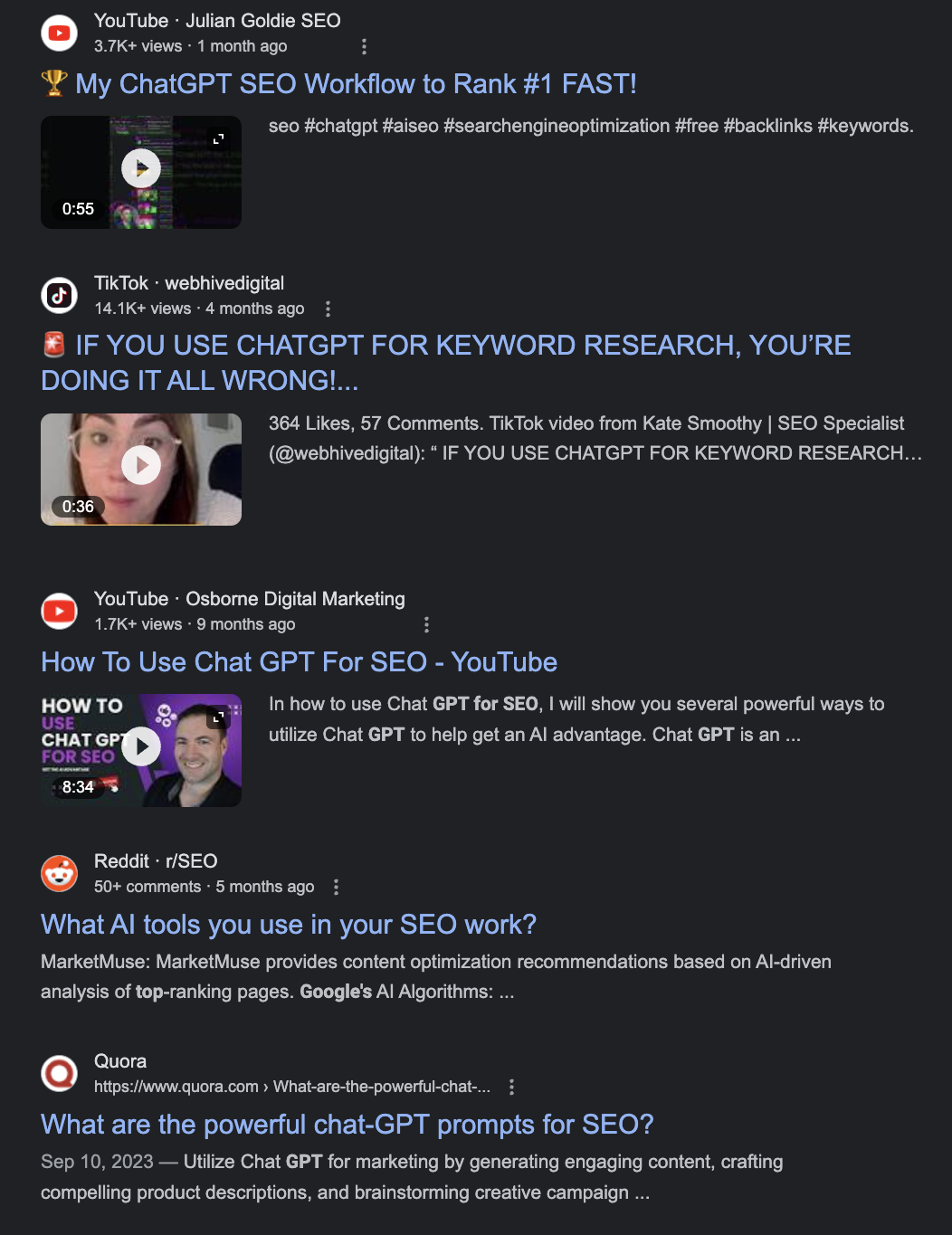 Screenshot from Google, February 2024
Screenshot from Google, February 2024Fortunately, you can increase engagement with content on some platforms like TikTok using a popular or trending hashtag.
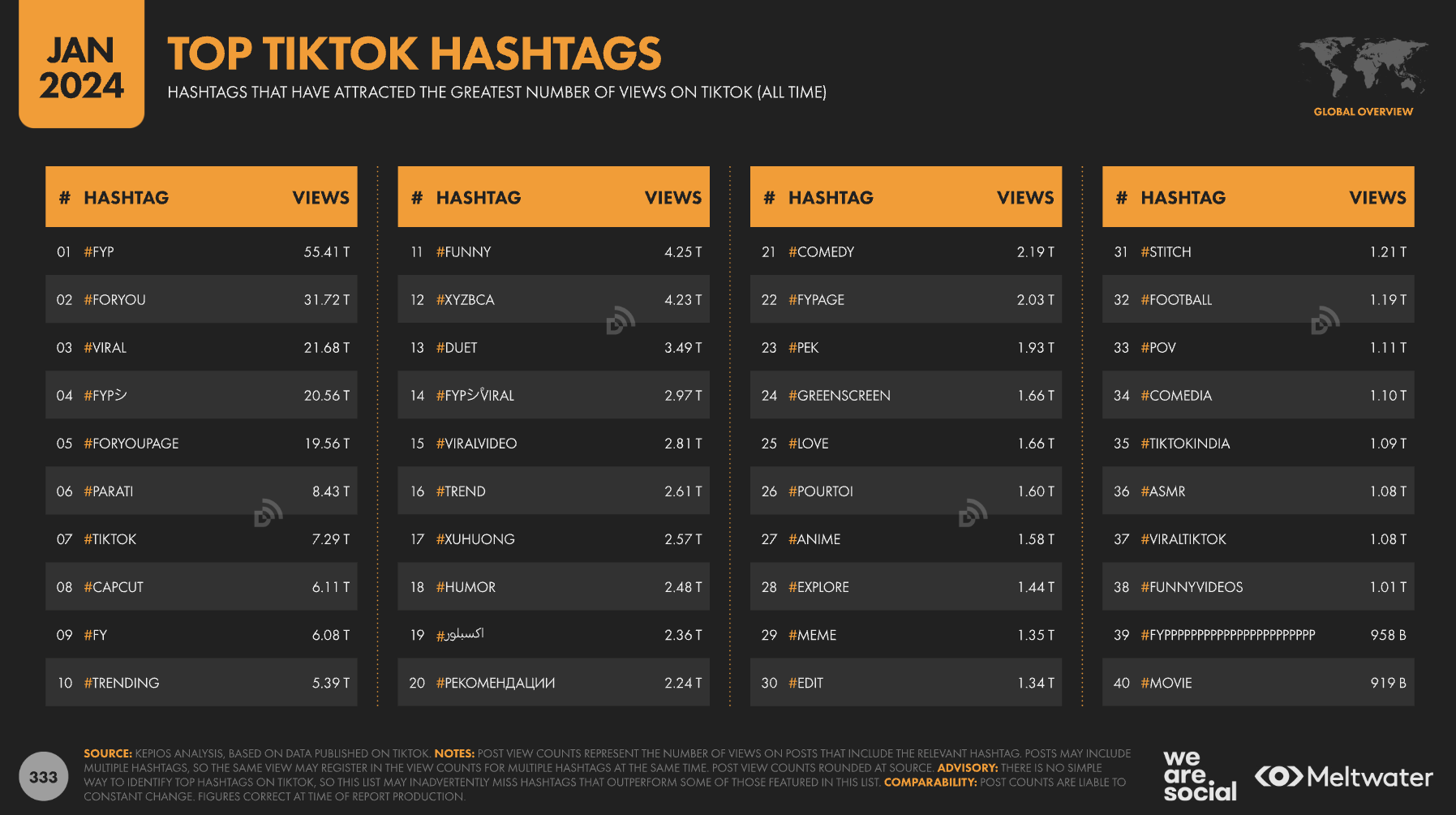
While some hashtags overlap, the top-used hashtags on Instagram offer unique options for Reels and images.
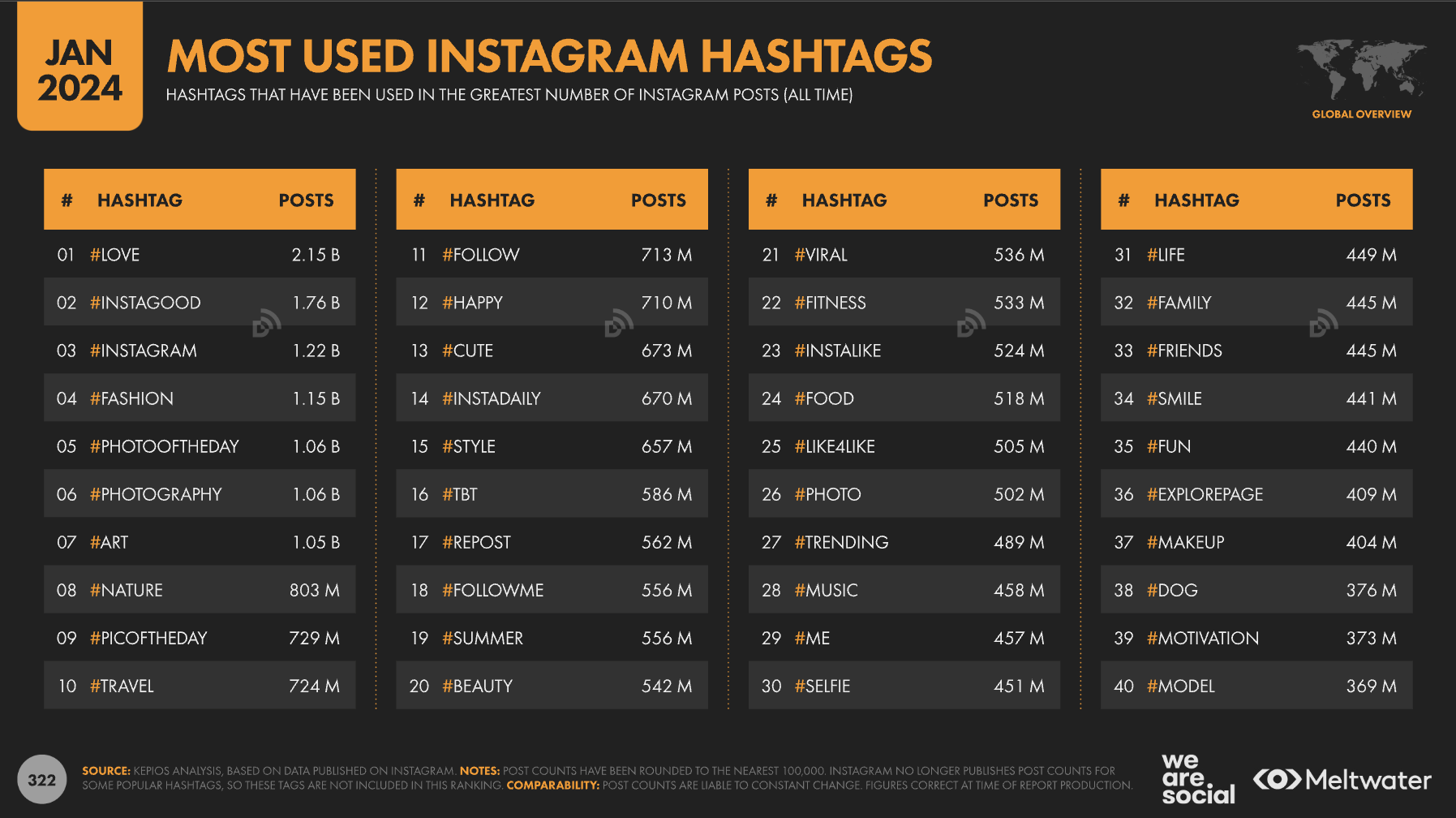
Conversely, B2B marketers may find some of the most followed hashtags on LinkedIn work more effectively to boost visibility and engagement.
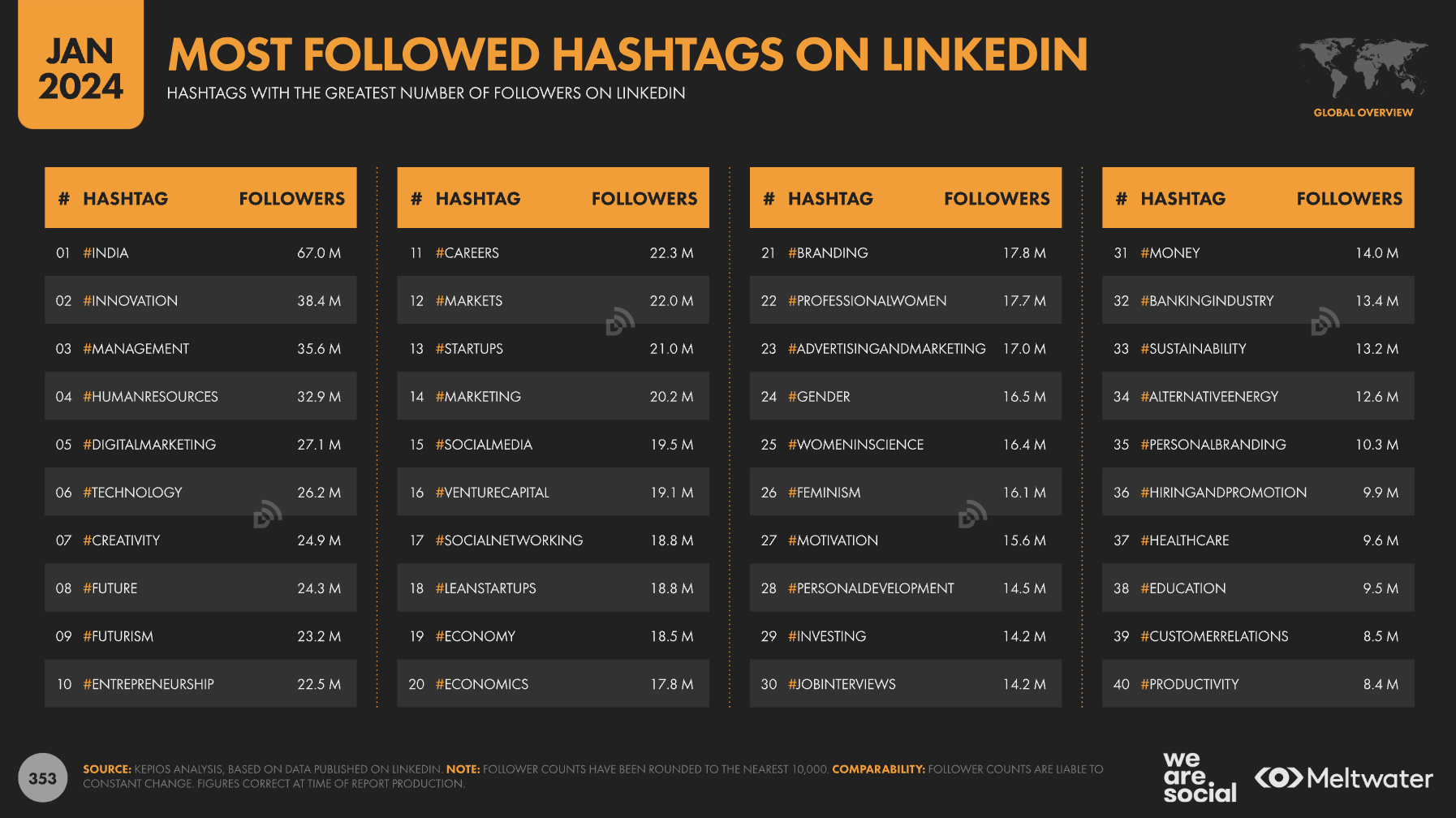
If you use the search box on most social platforms, you can get more information for hashtags in your industry. Facebook, shown below, includes the number of posts and number of people following the hashtags for popular terms.
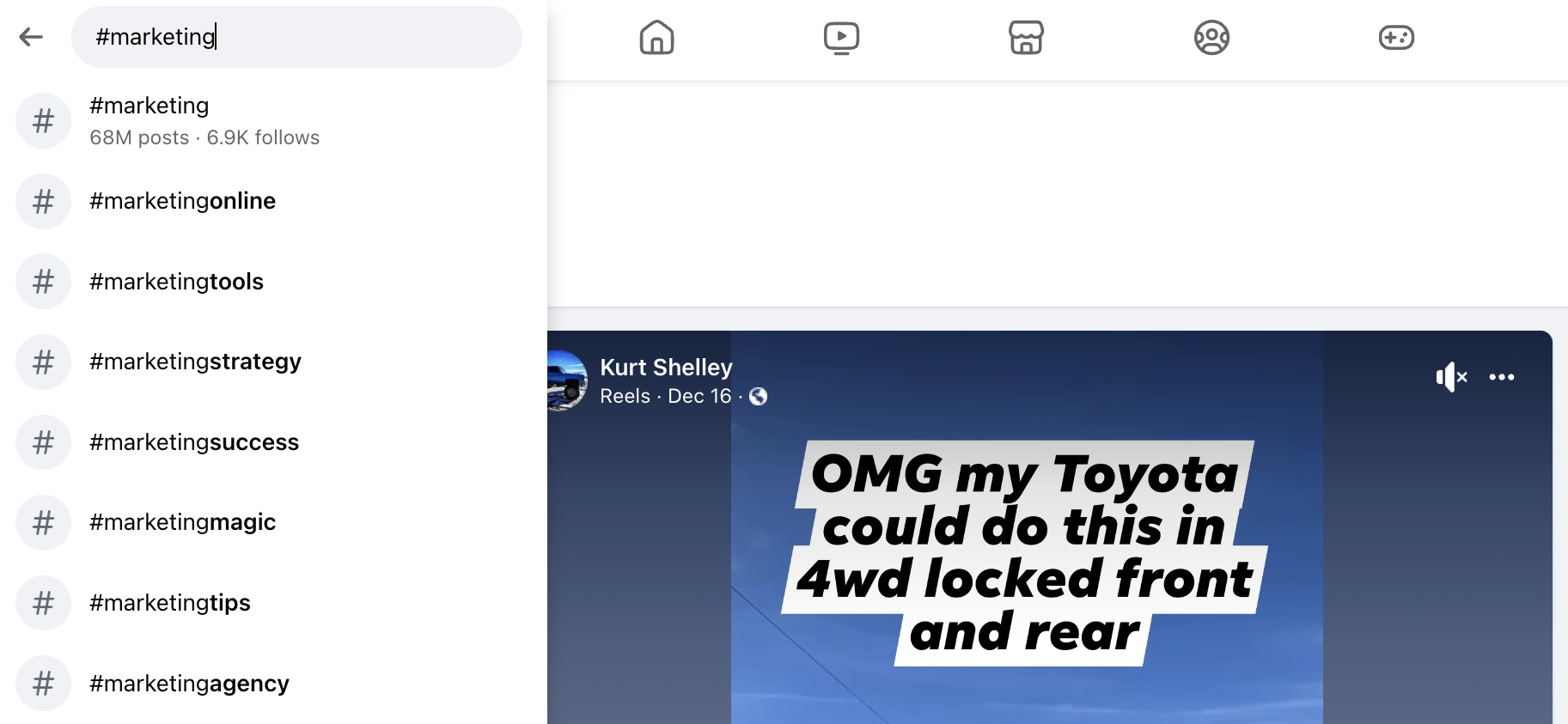 Screenshot from LinkedIn, February 2024
Screenshot from LinkedIn, February 20246. Top Video Content & YouTube Search Terms
With video from YouTube, TikTok, and other social networks peppered throughout Google SERPs, it will be crucial for brands to invest in video content to capture their target customer’s attention.
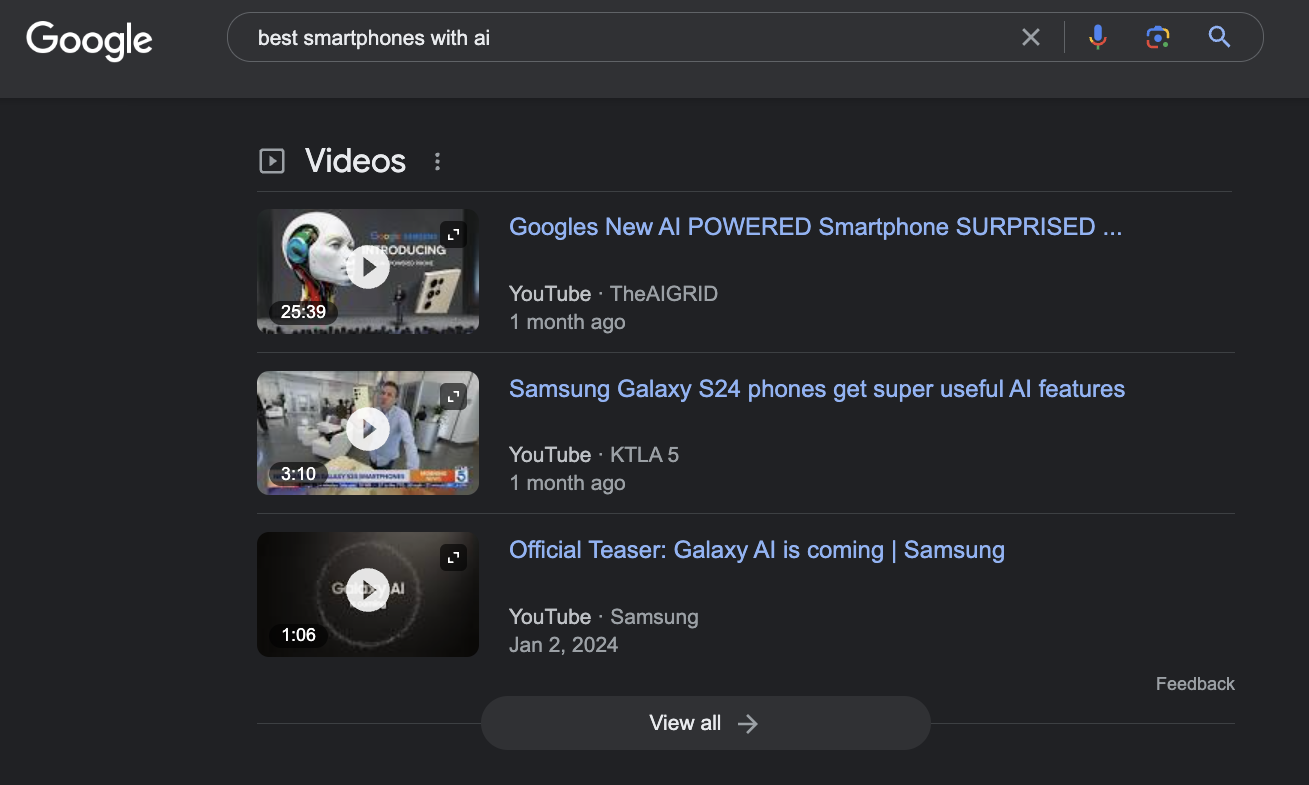 Screenshot from Google, February 2024
Screenshot from Google, February 2024The following types of videos are the most popular.
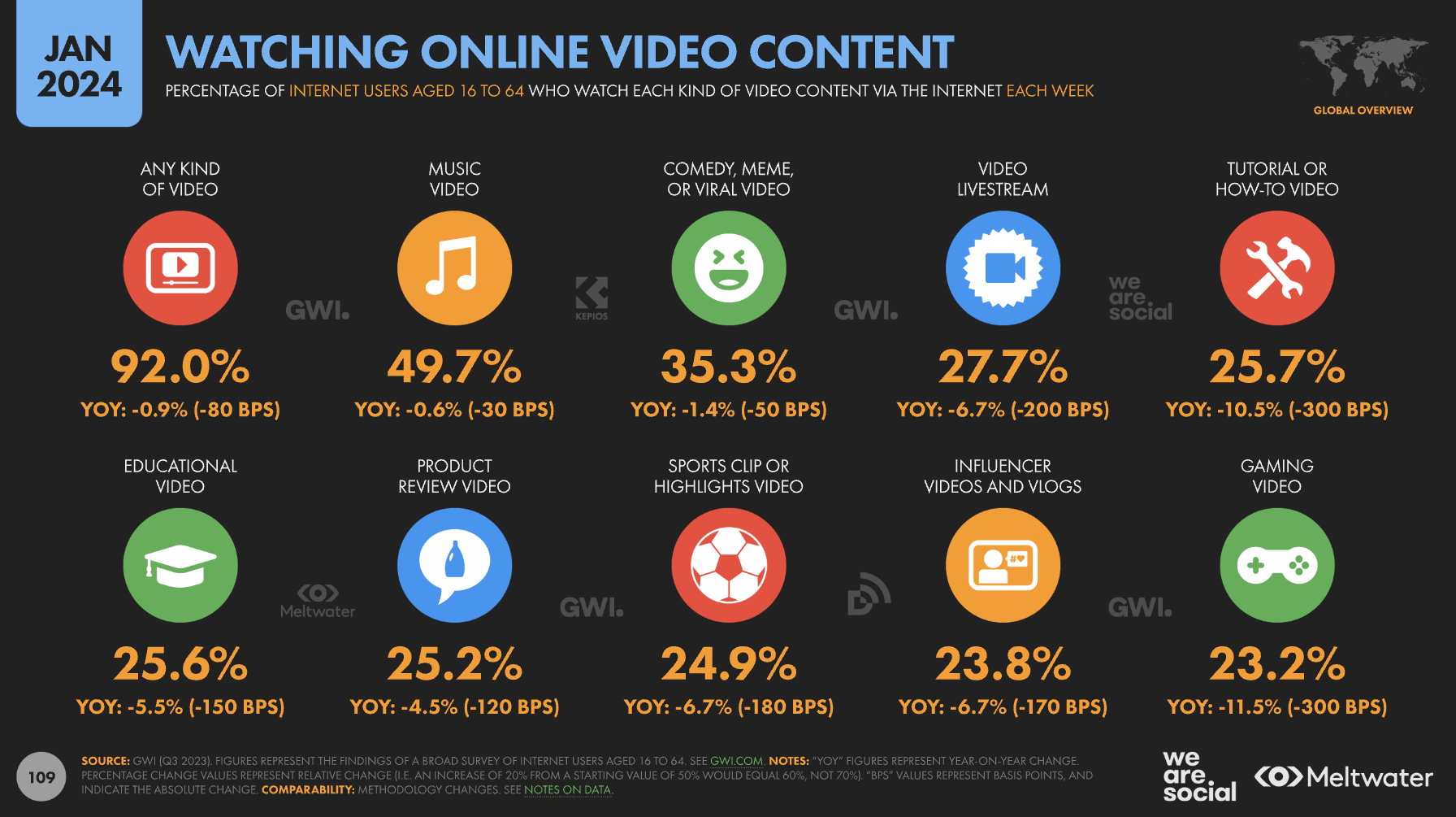
For example, with its new electric car model, Nissan created a four-hour music video to reach lo-fi lovers.
Combine the top types of videos watched with the list of YouTube’s most searched keywords and trends for more content inspiration.
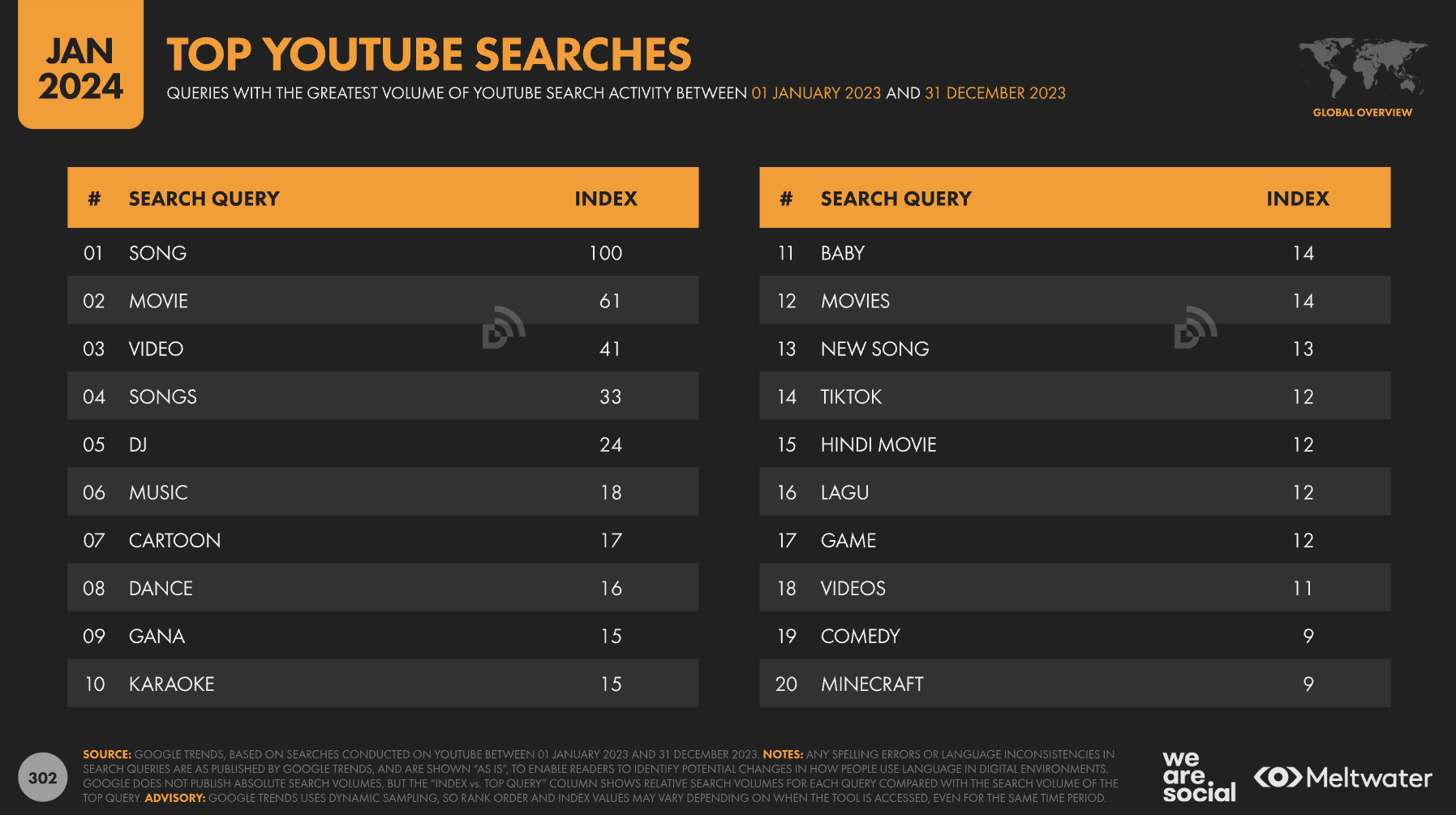
7. Keywords That Drive Purchases
Consumer electronics and fashion are top of Google’s most searched shopping terms.

In addition, specific keywords that help consumers find the best deals possible will also drive purchases.
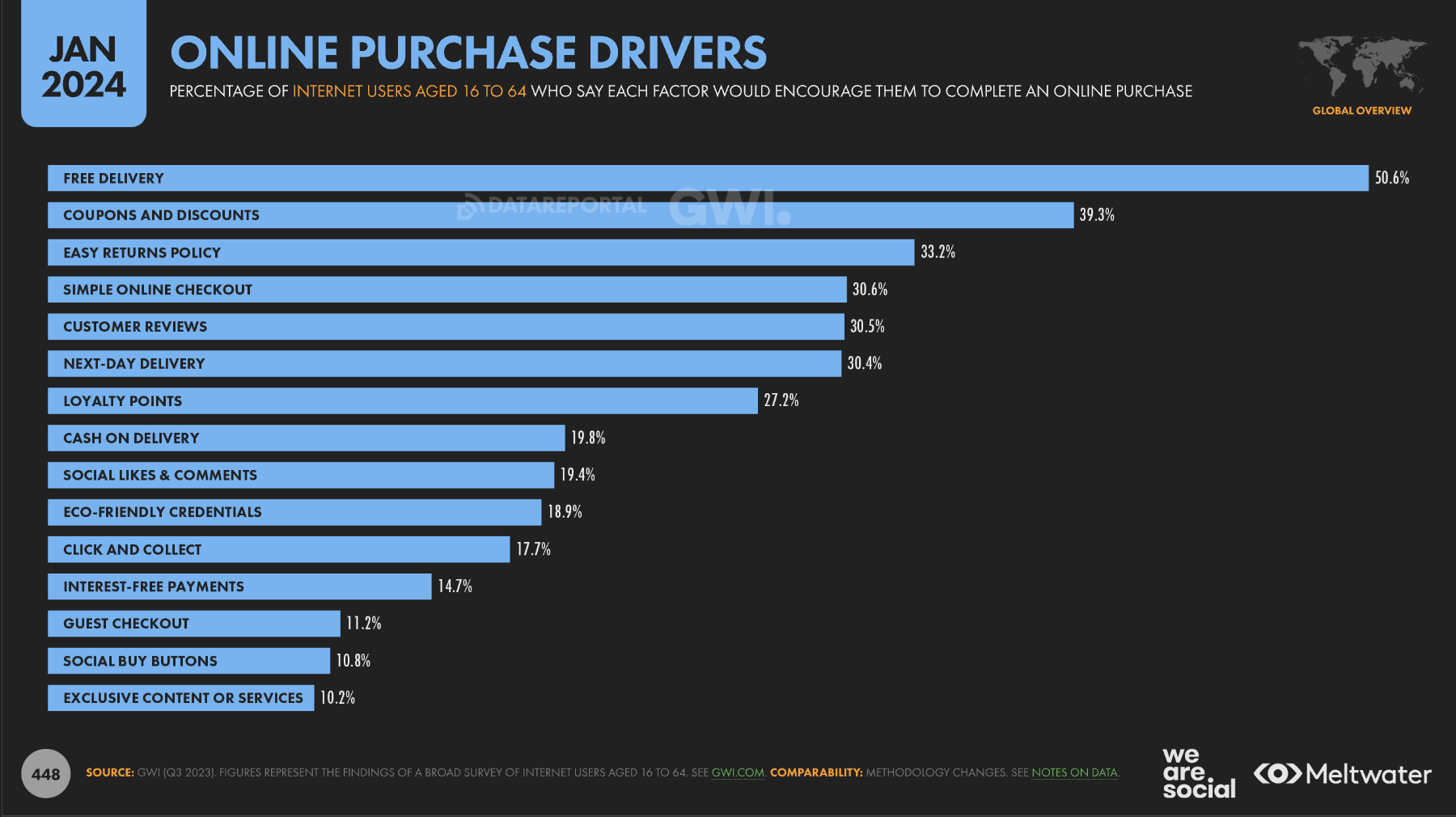
To ensure that your ecommerce site appears in search results for people intent to purchase, look for ways to utilize content with keywords that can increase conversions.
For example, if your store offers coupon codes, you should highly consider creating a page dedicated to current offers on your website.
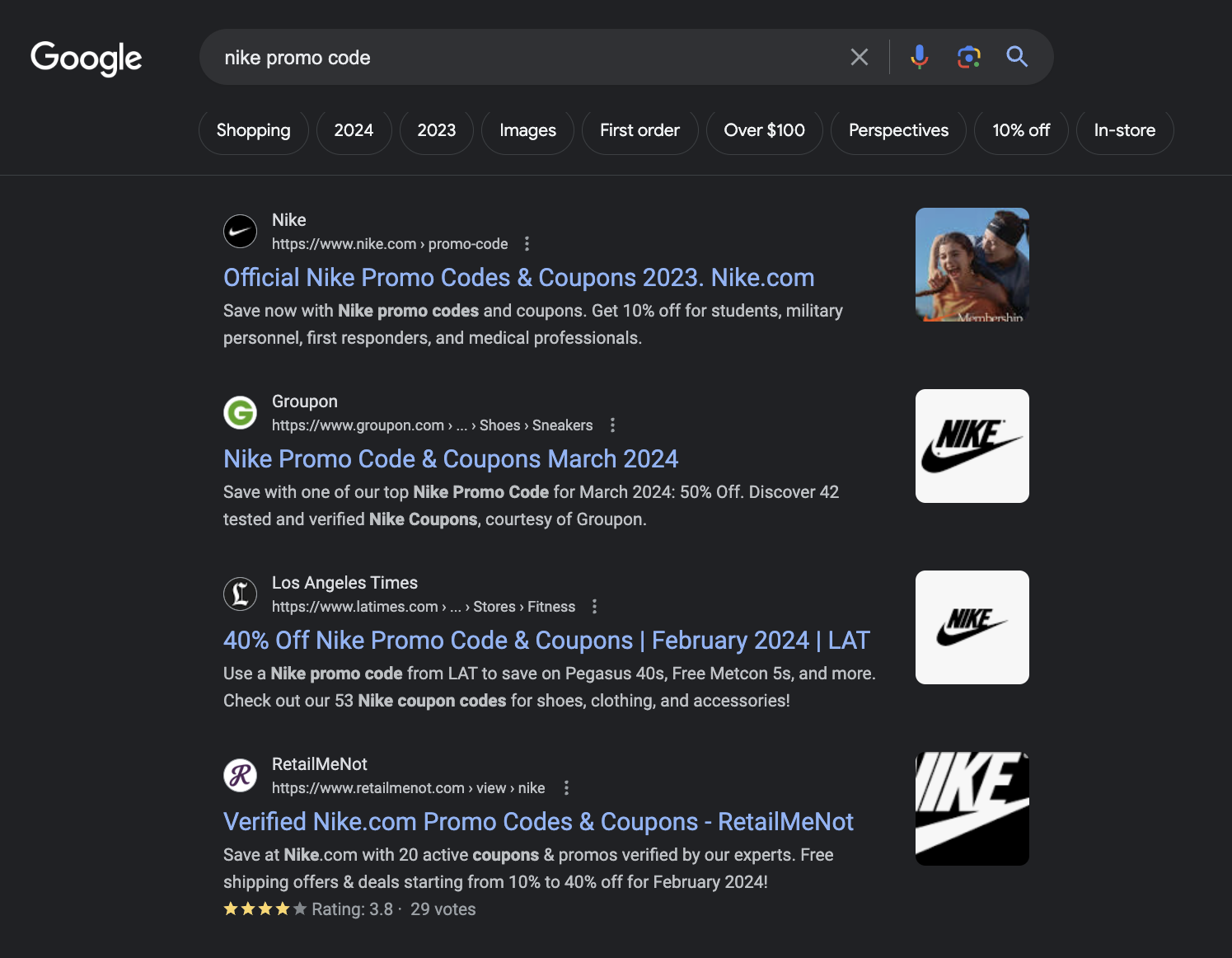 Screenshot from Google, February 2024
Screenshot from Google, February 2024In addition to boosting sales, it could help you gain additional visibility in search, as promo codes and related terms have a high search volume.
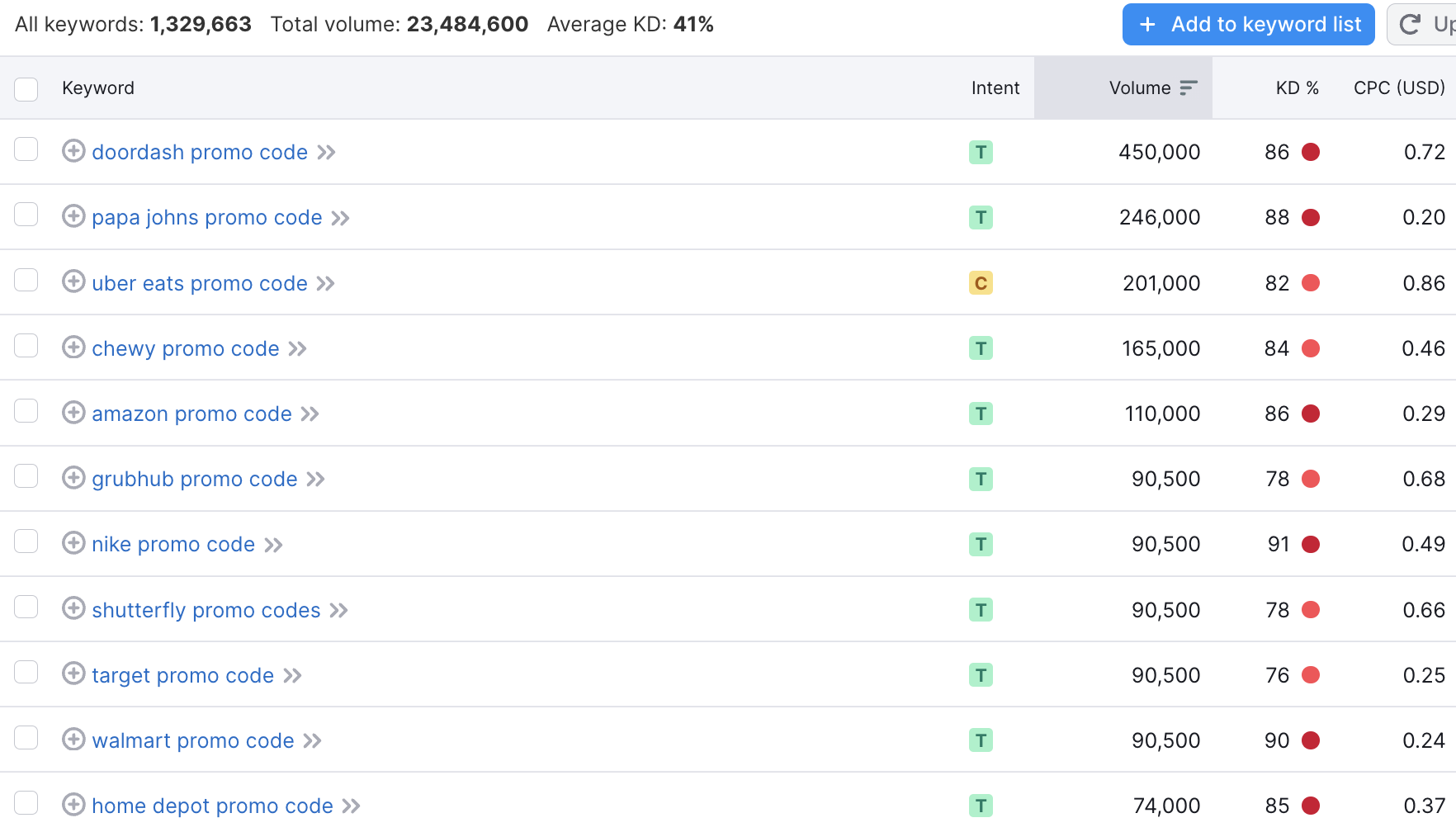 Screenshot from Semrush, February 2024
Screenshot from Semrush, February 20248. Digital Experiences Must Be Mobile Friendly
As the number of people who access the Internet with mobile phones each year grows, the number who access it via laptop or desktop decreases.
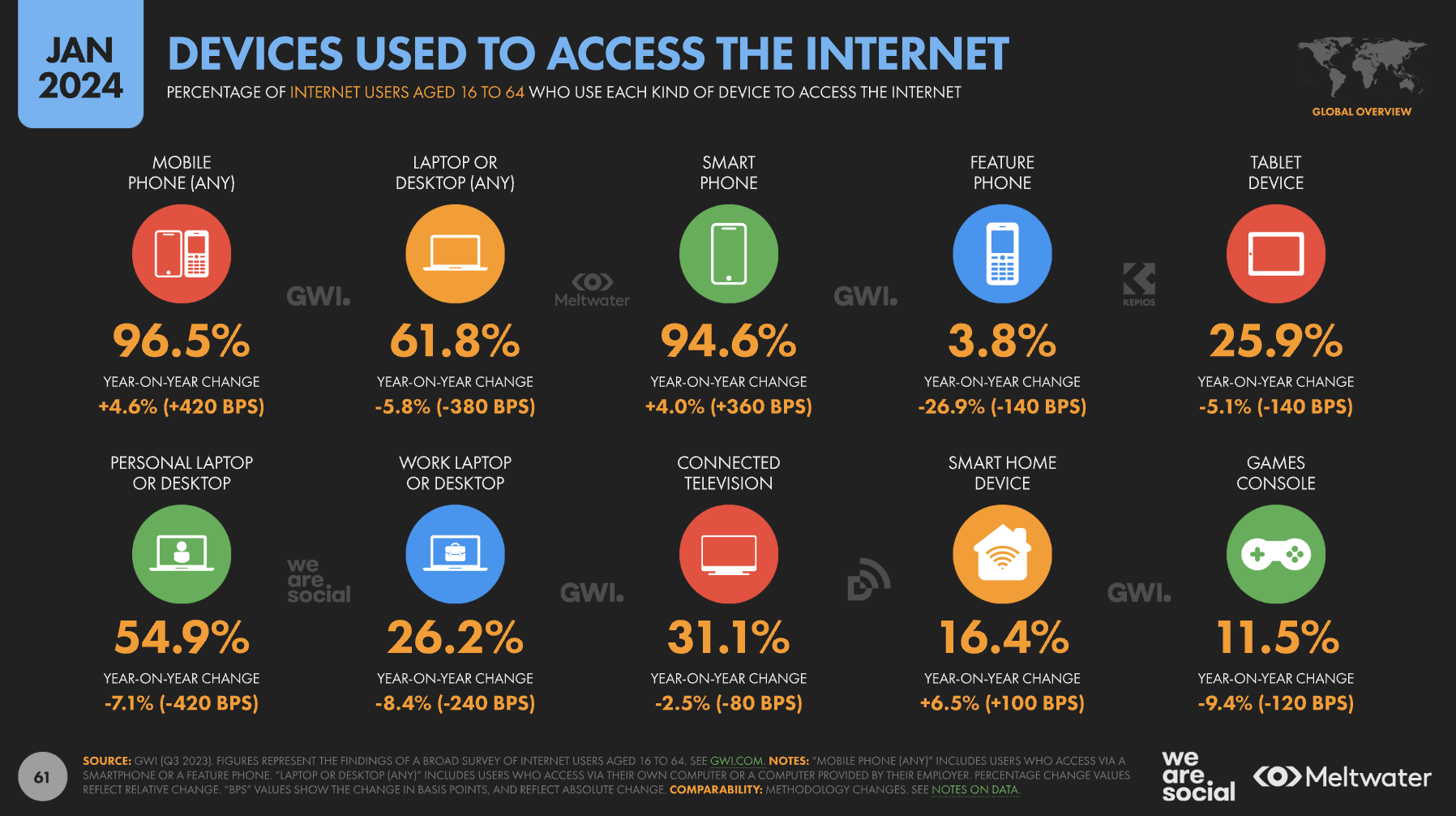
It doesn’t matter if people are at work or home – they now prefer mobile devices. Design every digital experience with mobile performance in mind, from website redesigns to email marketing campaigns.
Most smartphone users will use an Android device, making your user experience between your website and app in the Google Play store.
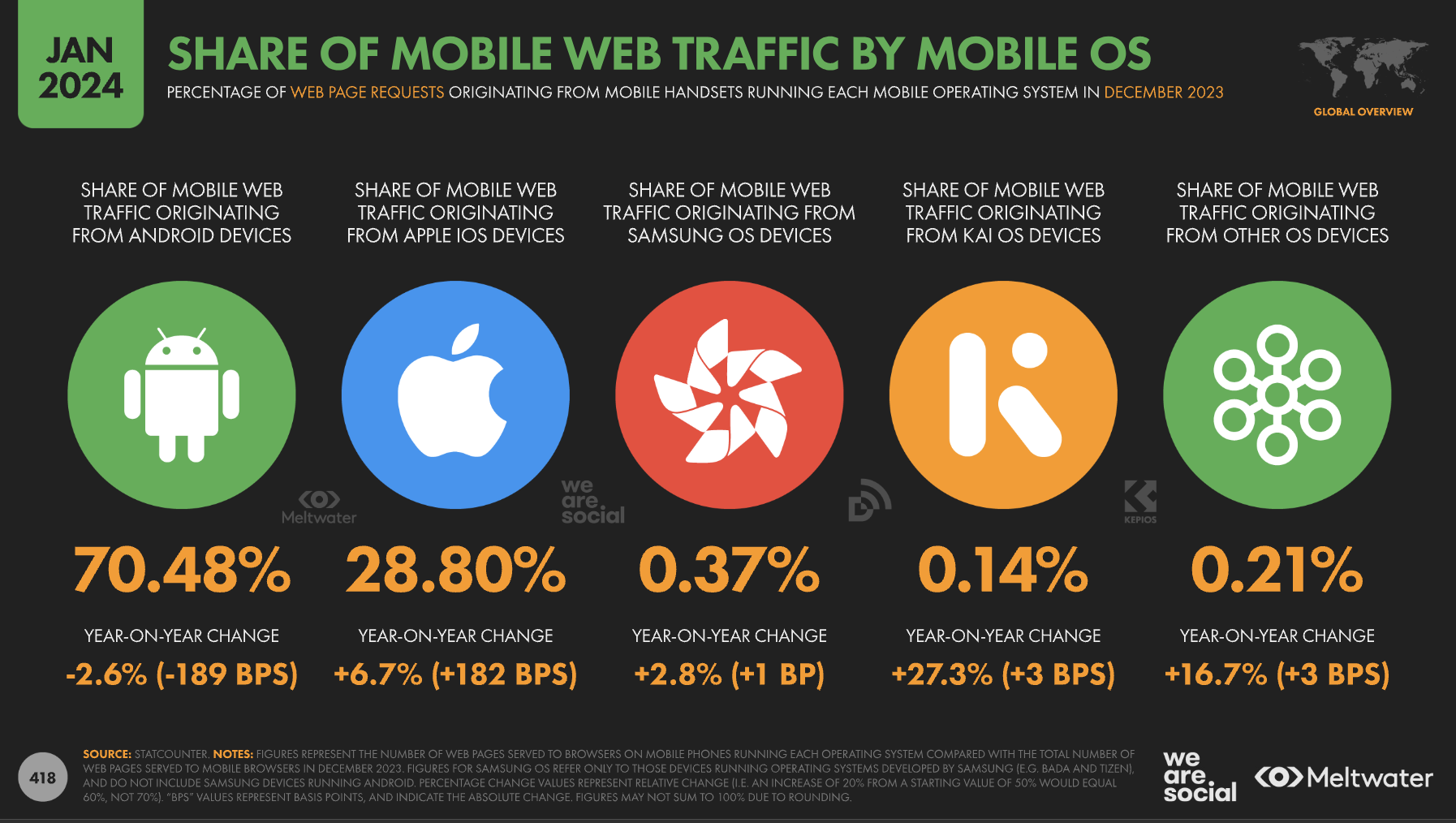
More than half of all online visitors from any device will likely use Google Chrome. To ensure your ads continue to reach the right audience, advertisers should stay current with the latest ad targeting options once Chrome depreciates third-party cookies.
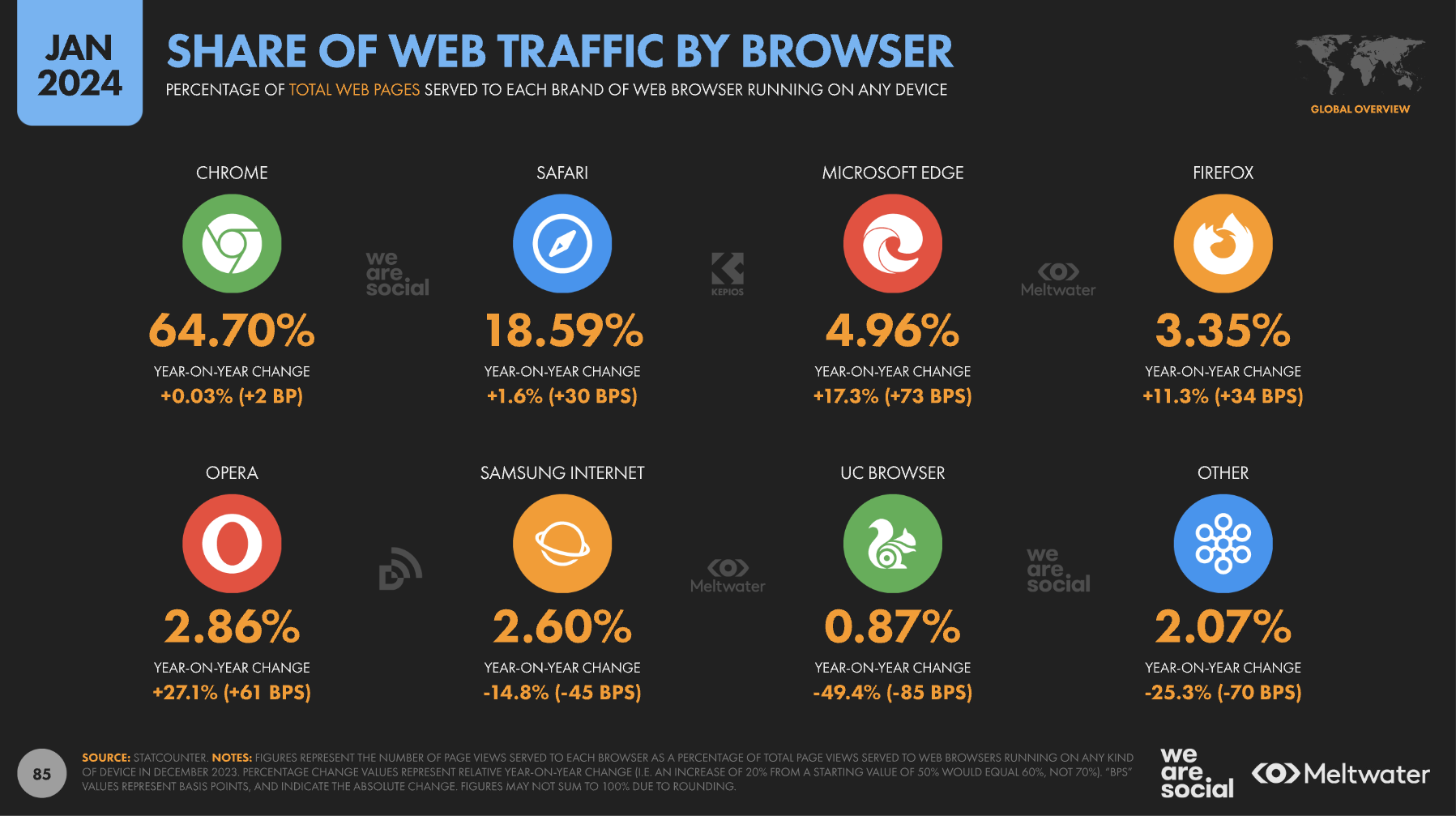
Conclusion
As the marketing landscape evolves, marketers are encouraged to invest in mobile-friendly digital experiences, social media content, and safe generative AI tools for brand advertisers and enterprises. We hope these insights from DataReportal’s Digital 2024: Global Overview Report help you shape a profitable marketing strategy for 2024.
In-post images from DataReportal unless otherwise specified.
Featured image: 1st footage/Shutterstock
Source link : Searchenginejournal.com
